

What Is a Cover Letter? Definition, Purpose, and Types
When you apply for a job, the first impression you make on the recruiter is crucial.
Most people know that a resume is a key document for job applications.
However, another important tool is the cover letter .
It helps you stand out from other candidates, showcasing your personality , skills , and interest in the job.
In this blog post, I will explain everything you need to know about a cover letter .
I will cover:
- What a cover letter is (definition),
- Why it is important (purpose), and
- The different types of cover letters.
Let’s get started!
1. What Is a Cover Letter? (Definition)
A cover letter is a one-page document that you send with your resume when applying for a job. It is a formal letter written to the hiring manager or recruiter.
The main goal of the cover letter is to introduce yourself and explain why you are the right person for the job.
While a resume lists your work experience, education, and skills , a cover letter allows you to share a bit more about yourself. It gives you the chance to :
- Explain your interest in the job,
- Highlight relevant skills and achievements, and
- Connect your experience to the job requirements.
In simple words , a cover letter answers the question: Why should we hire you?
2. Purpose of a Cover Letter
You may wonder: Why do I need a cover letter when my resume already lists my skills and work history?
A well-written cover letter serves multiple purposes.
Let me break it down:
2.1 To Introduce Yourself
The first purpose of a cover letter is to introduce yourself to the employer.
The opening paragraph typically includes:
- The position you are applying for , and
- Where you found the job posting.
It is your chance to make a strong first impression and grab the employer’s attention.
2.2 To Show Your Interest in the Job
Employers want to know that you are not applying randomly to every job opening.
In your cover letter, you can explain:
- Why you are interested in the company, and
- What excites you about the role.
For example: “I am passionate about digital marketing and admire XYZ Company’s creative campaigns. I am excited about the opportunity to bring my experience in social media management to your dynamic team.”
This shows that you have researched the company and are genuinely interested.
2.3 To Highlight Relevant Skills and Experience
The resume lists your skills and experience, but a cover letter connects them to the specific job.
Here, you can:
- Highlight achievements or projects related to the role,
- Focus on the skills the employer is looking for , and
- Explain how you can contribute to the company’s success.
For example: “In my previous role as a content writer at ABC Agency, I created engaging blog posts that increased website traffic by 40% over six months. I believe my strong writing skills and creativity will add value to your content marketing efforts.”
This directly connects your past experience to the job requirements.
2.4 To Showcase Your Personality
Unlike a resume, a cover letter lets you share your personality and communication style.
Employers look for candidates who fit well with their team and company culture .
A well-written cover letter helps you stand out by showing:
- Your enthusiasm,
- Your professional tone, and
- A bit of your personality .
For example: “As a team player who loves challenges, I look forward to collaborating with your marketing team to achieve great results.”
This makes you sound motivated and approachable.
2.5 To Explain Career Gaps or Changes
If you have gaps in your work history or are changing careers, a cover letter is the perfect place to address this.
You can briefly explain the reason for the gap or career switch in a positive way.
For example: “After taking time off to care for my family, I am now excited to return to the workforce and use my skills in customer service to contribute to your team.”
This helps employers understand your situation without making assumptions.
2.6 To Demonstrate Your Writing Skills
Strong written communication is a valuable skill in any job.
A cover letter allows you to show:
- How well you can organize your thoughts, and
- Your ability to write clearly and professionally.
Employers will notice your attention to detail, grammar , and structure, which can leave a positive impression.
3. Types of Cover Letters
Did you know there are different types of cover letters?
Depending on your situation, you may need to write a specific type of cover letter.
Here are the four main types:
3.1 Application Cover Letter
This is the most common type of cover letter.
You send it when applying for a specific job opening.
- Purpose : To apply for a job and explain why you are the best candidate.
- A brief introduction,
- Why you are interested in the job,
- How your skills match the job requirements, and
- A closing statement.
For example: “Dear [Hiring Manager], I am excited to apply for the position of Sales Executive at XYZ Company. With 5 years of experience in sales and a proven record of exceeding targets, I believe I can contribute to your team’s success…”
This type of cover letter focuses on a specific role and company.
3.2 Prospecting Cover Letter (Inquiry Letter)
A prospecting cover letter is used when you are reaching out to a company that has not advertised a job opening.
You are inquiring about potential opportunities.
- Purpose : To express your interest in the company and ask about future job openings.
- Why you are interested in the company,
- Your skills and experience, and
- A request for information about job opportunities.
For example: “Dear [Hiring Manager], I admire ABC Company’s commitment to sustainable design. I am a graphic designer with experience in eco-friendly branding projects, and I would love to contribute to your creative team. Could you let me know if there are any current or upcoming opportunities?”
This type of cover letter shows initiative and a proactive attitude.
3.3 Networking Cover Letter
A networking cover letter is sent to someone in your professional network.
This could be a friend, mentor, former colleague, or LinkedIn connection.
You use it to ask for career advice , referrals, or information about job opportunities.
- Purpose : To seek advice, referrals, or job leads through your network.
- Why you are reaching out,
- Your skills and career goals, and
- A polite request for help or guidance.
For example: “Dear [Name], I hope you’re doing well. I am currently looking for a new opportunity in the marketing field and was wondering if you know of any open positions at your company or elsewhere. With my background in content marketing, I believe I can bring value to a dynamic team…”
Networking cover letters rely on personal connections and are less formal.
3.4 Career Change Cover Letter
A career change cover letter is used when you are switching to a new career field.
It explains why you are making the change and how your existing skills are transferable to the new role.
- Purpose : To connect your current experience to the new career path.
- Your motivation for changing careers,
- Transferable skills and achievements, and
- How you will add value to the new role.
For example: “Dear [Hiring Manager], After 8 years as a teacher, I am excited to transition into an HR role. My experience in mentoring students, resolving conflicts, and managing projects has given me strong interpersonal and organizational skills that are perfect for HR management.”
This type of cover letter helps employers see how your skills apply to the new role.
Tips for Writing a Great Cover Letter
Now that you know the types of cover letters, here are some tips to make your cover letter stand out:
- Keep It Short : A cover letter should be one page long, with 3–4 paragraphs. Be concise and to the point.
- Customize It : Tailor each cover letter to the specific job and company. Avoid using a generic template.
- Your contact information,
- The date, and
- The recipient’s name and title.
- Start Strong : Use a powerful opening sentence to grab attention. Avoid generic phrases like, “I’m writing to apply for…”
- Focus on Achievements : Highlight specific achievements, not just duties. Use numbers or examples to show results.
- Show Enthusiasm : Employers appreciate genuine excitement for the role.
- Proofread : Check for grammar , spelling, and formatting errors. Ask someone else to review it if possible.
Final words
A cover letter is a powerful tool in your job application process.
It introduces you to the employer, shows your interest in the job, and highlights how your skills match the role.
Unlike a resume, it also gives you the chance to showcase your personality and explain unique situations like career changes or gaps.
There are different types of cover letters, including application letters, prospecting letters, networking letters, and career change letters.
Choosing the right one depends on your situation.
By following the tips I shared in this post, you can write a strong and customized cover letter that helps you stand out from the competition.
Remember, a great cover letter can open the door to new opportunities and help you land your dream job.
Start writing your cover letter today and take the first step toward your future!
- Body Language Tips for Your Next Job Interview
- Interview Strategies for Introverts
- Career Break Guide: Definition, Reasons and Tips
- A Comprehensive Guide to Career Aspirations
- Mastering Interview Vocabulary Like A Pro
Related Posts
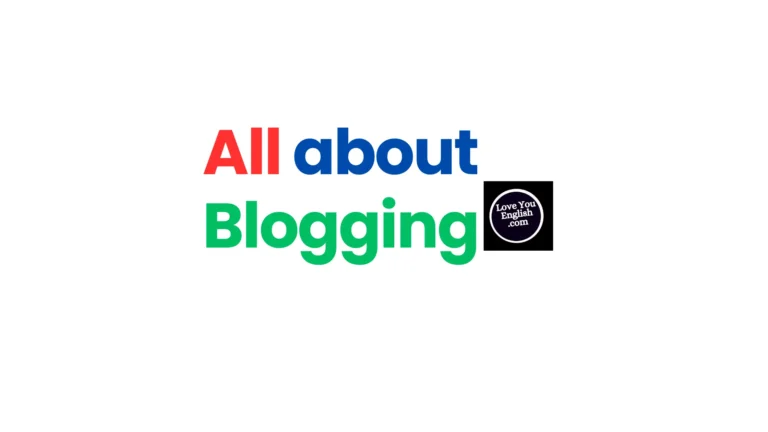

What Is Blogging? (Definition, Advantages and Tips)
What Is Blogging? (Definition, Advantages, and Tips) Blogging has really changed a lot since it first started as a simple online diary….
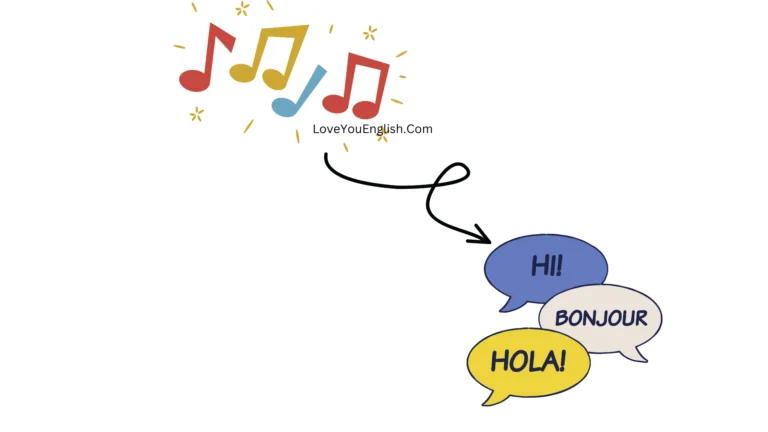
Fascinating Links Between Music and Language
Fascinating Links Between Music and Language Hello everyone! Have you ever taken a moment to think about the amazing links between music…

Interview Vocabulary: Words Related to Job Interviews
Interview Vocabulary: Words Related to Job Interviews Hey everyone, in today’s class we’re going to learn some new words for interviews. We’ll…
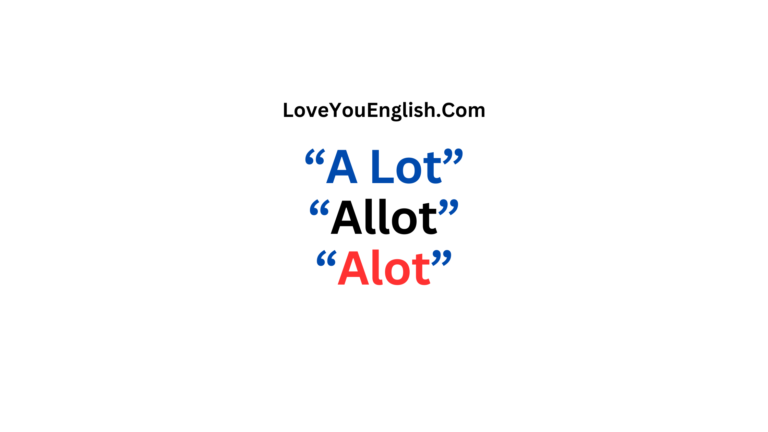
“A Lot” vs. “Allot” vs. “Alot”: What’s the Difference?
“A Lot” vs. “Allot” vs. “Alot”: What’s the Difference? Writing in English can be tricky, especially when it comes to words that…
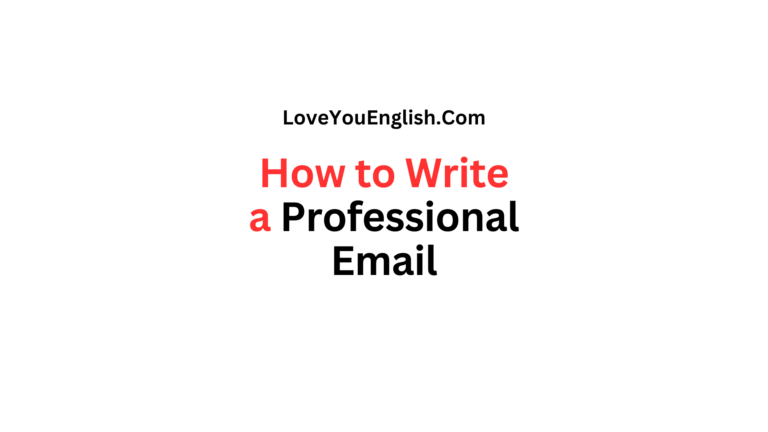
Tips for Writing a Professional Email
Tips for Writing a Professional Email Email has become an essential tool in the professional world. Whether you’re applying for a job,…
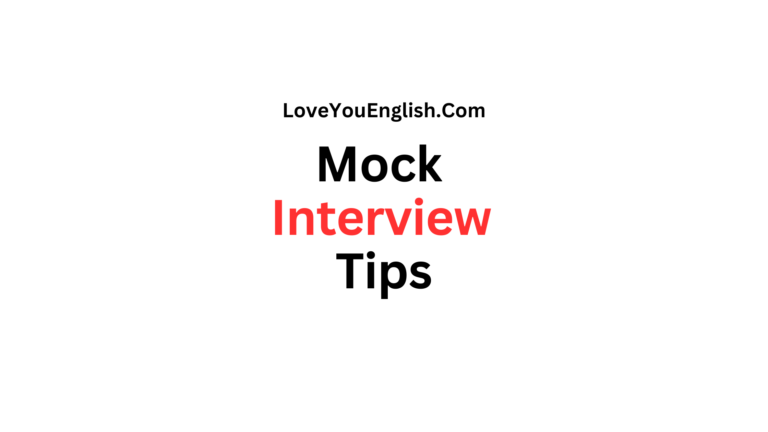
Mock Interview Tips: How to Organize One & Why It Matters
Mock Interview Tips: How to Organize One & Why It Matters In today’s tough job market, doing well in an interview can…
- Search Search Please fill out this field.
What Is a Cover Letter?
Understanding cover letters, types of cover letters, how to write a cover letter, tips for writing a cover letter.
- Cover Letter FAQs
The Bottom Line
- Career Advice
What Is a Cover Letter? Types and How To Write One
:max_bytes(150000):strip_icc():format(webp)/HEADSHOT1-304557f6a67f42bdbc4c24d13a94ca90.jpg)
A cover letter is a written document commonly submitted with a job application outlining the applicant's credentials and interest in the open position. Since a cover letter is often one of only two documents sent to a potential employer, a well- or poorly-written letter can impact whether the applicant is called for an interview .
Key Takeaways
- A cover letter is commonly submitted with a job application explaining the applicant's credentials and interest in the position.
- A good cover letter complements the resume and explains why the candidate is the ideal person for the job.
- Common cover letter mistakes can sink a job applicant.
Investopedia / Joules Garcia
Most job postings are done online and no longer require a physical application. Instead, applicants send companies a copy of their resume along with a cover letter either by email or with a hard copy through the mail. A resume offers a glimpse into the professional and academic experience of a potential employee. The cover letter, on the other hand, acts as an introduction written by the candidate to express their interest in the position and what makes them the best fit for the job.
A good cover letter complements a resume by expanding on items relevant to the job. In essence, it's a sales pitch that describes why the applicant is the best person for the position. Career experts advise job seekers to spend time customizing each cover letter for the particular position, rather than using a generic missive. Although this requires extra effort, it can be very helpful in allowing an applicant to stand out above the competition.
The cover letter provides information to the employer about who the candidate is as a professional and as a person. This includes their areas of interest, professional goals, knowledge, skills they've gained over the years, achievements, passions, and aspirations. The cover letter should be a one-page document that provides a clear and concise idea about why the candidate is the best person for the job . It should also highlight the cultural fit.
While there is no set template for a cover letter, the type of letter that you write will depend on the requirements of each individual company or employer. The information that is included in a cover letter will vary depending on the goals and purpose of your application.
- An application cover letter is the most familiar type of cover letter. This is generally written in response to a vacancy that is posted on a company's website or a job board. In addition to answering any specific questions posted in the job ad, it may also highlight any experience or skills that are suitable for the position.
- A referral cover letter is similar to an application letter, but it includes the name of a colleague or employee who recommended the applicant for the open position. A strong referral can help you stand out against other applicants.
- A prospecting cover letter , also known as a letter of interest, is written by a job seeker and addressed to a company where they would like to work. However, it is not aimed at a specific role or vacancy. Instead, this type of letter inquires about open positions in general and may highlight any special skills that make the writer suitable for the company.
When employers post a job ad that requires a cover letter, they may specify certain requirements for the cover letter to address. For example, they may require applicants to answer certain questions, or to respect a certain word limit. It is important to follow these requirements, as they reflect on the applicant's ability to understand and follow directions.
If the employer does not set any expectations, a typical cover letter should be about a page or less, and may include a formal greeting, contact information, and links to the applicant's portfolio or work. It should highlight any special skills, and explain why you would be a good fit for the position. This is your chance to impress the employer: Even if your resume does not have everything an employer wants, a well-written cover letter can make the applicant stand out from the crowd.
However, it is possible to include too much information. Most employers will simply glance at the majority of their cover letters, and a long-winded essay might end up at the bottom of the pile. A few short paragraphs explaining your skills, and why you chose that specific employer, should be enough to put your best foot forward.
Writing a cover letter doesn't have to be tedious—even though it may seem like it's a chore. Here are a few simple tips you may want to consider when composing your cover letter:
- Personalize your letter for each role. Never use a generic cover letter. This means you have to write a new one for each position. Be sure to include your strengths and skills, and explain why you’re the perfect candidate.
- Include contact information. If the posting doesn't include the hiring manager's name, call the company , or check its website. Including this person's name gives your letter a proper greeting and also shows you have initiative. And don't forget to add your contact information, too. This is important if your resume gets separated from your cover letter.
- Simplify your letter. Communicate clearly and concisely. Using complex words and sentences would most certainly fail to convey your intentions with the company and the person reading the letter probably won't bother with the rest of your application.
- Be specific when needed. Don't rehash your resume, so be sure to quantify your accomplishments. For instance, expand on your marketing experience in your cover letter by saying you brought in 200 additional clients each month and increased revenue to $10,000. This can set you apart from candidates with vague personal details.
- Proofread. After you’ve written the letter, go over it a few times to ensure there are no errors. Then ask someone else to do a once-over and recommend any changes you may need to make.
A simple, focused cover letter without any typos or grammatical errors will get you noticed by potential employers.
A perfect resume can often be sabotaged by a poorly thought-out cover letter or one that is laden with mistakes. Whether you include the letter as per required submission guidelines, or you simply want to emphasize your interest in the job, make sure you avoid making these blunders.
- Names matter. This includes the name of the hiring manager, the company, and yes, even yours. Make sure you have the right names and the correct spelling. And don't forget to change the names if you're using the same cover letter for multiple jobs.
- Restating your resume. Since the cover letter is used to identify your skills and explain how your previous experience is applicable to the desired position, don't restate the stuff on your resume. Remember, the cover letter should complement your resume, not just summarize it.
- Keep your letter tight. Recruiters often go through hundreds of applications and don't have time to read through a three-page missive. The absolute maximum length for a cover letter should be one page, with a few concise paragraphs.
- Omit unnecessary details. Stay on topic. There's no need to mention your graphic-design skills if you're applying for an accounting position. It's a good idea to leave out personal things like your IQ, recreational accomplishments, interests, and hobbies. That is unless they relate to the job or company.
- Avoid sounding arrogant. Ensure your cover letter does not make you appear arrogant . While the cover letter is about you and your accomplishments, find a way of saying "I'm the best" without actually saying it. Avoid overusing words like "I," "me," or "my."
- Remember that spelling counts. Typos and grammatical errors can show you didn't bother to proofread your own letter. And make sure to be consistent—don't convey a dash with "--" in one place and "—" in another.
- Design matters : with the proliferation of publishing, design trends, and software, candidates have become creative in making their cover letter stand out from a design perspective. Make sure your cover letter projects your personality in terms of design while remaining professional. That is personal signature and branding.
How Long Should a Cover Letter Be?
According to Indeed , a leading job-seeking site, a typical cover letter should be about three or four paragraphs long and highlight any special experience or achievements that make the applicant exceptionally well-suited to the position.
How Do You Start a Cover Letter?
A cover letter should start with a formal greeting, preferably addressed to the hiring manager. If you do not know who will be reading your cover letter, a generic "to whom it may concern" is an acceptable, albeit old-fashioned, way to address a cover letter. It is also acceptable to address the letter to a title, such as "Dear Hiring Manager," or "Dear Talent Acquisition Team."
What Should a Cover Letter Contain?
An effective cover letter should highlight the applicant's skills, experience, and any achievements that make them a good fit for their prospective employer. It is also a good chance to mention anything that is not included in the resume: For example, if an applicant is drawn to a certain employer because they love a certain product, the cover letter is a great place to mention it. Make sure your cover letter also includes your name and contact information.
In a competitive jobs market, an effective cover letter is one way to make a job application stand out. This is a chance for an applicant to demonstrate why they think they would be a good fit. However, a poorly-written or meandering cover letter can hurt an application more than it helps.
Harvard Extension School. " Resources and Cover Letters: An Extension School Resource ," Pages 3 and 5.
Harvard Extension School. " Resources and Cover Letters: An Extension School Resource ," Page 5.
Jobscan. " Cover Letter Formats ."
Indeed. " What Is a Cover Letter? "
Indeed. " How to Address a Cover Letter (With Examples). "
:max_bytes(150000):strip_icc():format(webp)/imdb-5bfc3b3ac9e77c00587b2727.jpg)
- Terms of Service
- Editorial Policy
- Privacy Policy
- Your Privacy Choices
What is a Cover Letter? Definition, Structure, Purpose, Types & Meaning
Written by The Enhancv Team
Career Experts
In This Guide:
What is a cover letter, what is the purpose of a cover letter in a job application, what to include in a cover letter, cover letter format and layout, should you use a cover letter template or example, what is a cover letter - takeaways.

Asking yourself, “What is a cover letter?”
In this article, we break down for you the basics about cover letters, their purpose, and what to include in yours.
When you’re applying for a job, a cover letter is just as important as your resume in a lot of ways. You always want to include a cover letter when you’re submitting your resume, to personalize the facts about your work history and to tailor your application to the job.
But if you haven’t written a cover letter before, it can be intimidating to figure out what to include. Don’t worry, this expert guide boils it all down into a quick read that gives you an overview and points you in the right direction to find everything you need to know about them.
In this post, we’re going to cover:
- What is a Cover Letter?
- What is the Purpose of a Cover Letter in a Job Application?
- What to Include in A Cover Letter
We also describe how you can lay out your cover letter to amp its impact, and we’ve even made it dead simple for you by including some perfect cover letter examples for you to check out.
A cover letter is a one-page document that you include with your resume as part of your application for a job. A good cover letter grabs a Hiring Manager’s attention and gets you to the next step of the hiring process.
While every job you apply for will have either a specific application form or will ask for a resume, not every one will ask for a cover letter. But you should always include one – it’s a game changer.
The upshot is that a resume is a summary of your work and education experience, while your cover letter adds relevant context to that experience for the specific job.
A cover letter is tailored to a specific job you’re applying for, and it highlights what your qualifications are and how they relate to that role and company. You can use it to give examples of how your experiences relate to the role and show how you’re the best person for the job.
Just as its name implies, a cover letter is written in a letter format, including a greeting, three or four body paragraphs, and a closing. Unlike a resume, your cover letter should be written in full sentences, and you want to use the first-person – “I’m writing to you today to…”.
You don’t want to just rhyme off the same things that are in your resume, though. Use your cover letter to give real life examples of how your experience, skills, or interests make you perfect for the job.
Head to our full article on the differences between a resume and a cover letter to learn more on this.
Put simply, it’s your chance to make a great first impression. It’s a tool you use to grab a hiring manager’s attention long enough that they look over your resume a bit closer and call you in for an interview.
A cover letter may not be something a job posting asks you to include, but don’t think that means you shouldn’t. A good cover letter is always a good idea, here’s why:
- You can tell a story in a cover letter that dives deeper into your qualifications,
- experience, and interests to show why you’re the best candidate for the job.
- A lot of candidates skip writing a cover letter, so by including one you immediately put yourself ahead of the competition!
- You can introduce yourself in a more personalized way and tailor your application specifically for the job.
- You can add a bit of flair or personality that gets a hiring manager to ask you in for an interview
- It shows that you put effort into your application, which again, puts you ahead of most of the competition.
This is just a snapshot of how a cover letter can help you. We’ve got a great article for you to look over if you want to know more about the purpose of a cover letter .
Should you send a cover letter for a job?
There is no question, yes, you should absolutely include a cover letter with your application.
We’ve done our homework on this and can tell you: a majority of hiring managers need or expect a cover letter, even if it’s not specified in the job posting.
Not only are they expected, but they’re a great tool for you too:
- Explain the reasons for any work gaps
- Clarify how the experience you have from other jobs applies
- Show how you fit their company culture
- Let them know why you’re changing jobs or fields
So, while a cover letter may not absolutely be necessary, they’re extremely useful, and always something you should take the time to write and include with your application.
Cover letters should usually include some of the same basic elements. We’ve put together a quick list below, but head over to our complete guide on what to include in your cover letter for a full explanation.
- A header – This is where you’re going to include all the contact info the hiring manager is going to expect to see. You want to be sure to give them what theyère looking for.
- Opening statement – You can get right to it here and make sure this is an attention grabber. Summarize your skills or experience and give them one good reason why it’s important for the job you’re applying to.
- Body – This paragraph should give some more details about you personally. Employers often hire someone for who they are, not what they know; this is your time to show them you’d be a great fit on their team.
- Closing and Call to Action – You want to close your cover letter with a thanks for the time they’ve taken and a professional sign-off. You should also let them know you’re eager to hear from them, and let them know to contact you to follow up.
Try to end with a great impression. It’s key that you know how to close your cover letter well to hit all the right notes.
A hiring manager takes about 7.4 seconds to look at each resume that comes across their desk, and there may be hundreds of those. A strong cover letter design can grab their attention long enough for them to set you into the callback pile instead of in the recycling bin.
We’ve put together the details on how you can really grab a recruiter’s attention with your cover letter design , but here’s the basics:
- Font - Always use a standard, easy-to-read font like Times New Roman or Arial. It should be 12pt or slightly bigger.
- Heading – Always use a professional format of heading, which includes your name and contact info, the date of writing, and the contact info for the person you’re writing to.
- Spacing – You want to single space the body of your cover letter, but leave spaces between the heading, the greeting, each paragraph, and your sign-off.
- Length – We know that it’s tempting to try to fit in as much as possible in the cover letter, but this is definitely a case of less is more. You want the content to be about half a page, so shoot for between 250-400 words.
Keeping your cover letter lean can be hard the first few times you write one. Check out our article on ideal cover letter length to get more tips on how to hit the sweet spot.
If you’re already a pro, maybe you can go it on your own and write a killer cover letter. But if this is your first cover letter, or you have any doubts, use our Cover Letter Examples to get some great ideas on how to write and format yours – we’ve got a few samples below.
Our examples cover different industries and positions, so you can fine tune the fit of your letter for exactly the job you’re applying to without trying to reinvent the wheel! Plus, these are cover letters that work to get interviews, so you can be sure you’ve got a great start.
If you want a real head start, we’ve even got a Cover Letter Templates page where you can head to get all the basics covered for you. Head there, input your specifics, and you’ll have a winning cover letter, easy-peasy.
- A cover letter is a one-pager you include with a job application to dive deeper into exactly why you are the best fit for the job.
- You always want to include a cover letter, even if it’s not specified in the job posting.
- Hiring managers get hundreds of resumes, and they fly through them - your cover letter can and should be designed to grab their attention.
- Personalize your cover letter and tailor it to the specific job you’re sending it in to, this includes relating specific skills, letting your personality shine, and getting the hiring manager’s name.
- Make sure it’s in perfect shape to get great results. Use our Cover Letter Checklist to make sure you’ve covered all the bases and haven’t overlooked any little mistakes that could cost you the job.
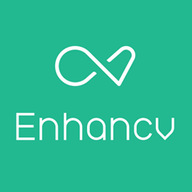
Cover Letter Guides
Resume critique like a pro: 11 steps walkthrough, questions to ask your future manager before joining the team, should you include citizenship on your resume, how to write about your career for an effective resume, “what are your strengths”: easy answers for this tough question (with 6 bonus examples), why does my resume look different when i upload it.

IMAGES
COMMENTS
May 31, 2024 · It's important to customize your cover letter for each role to demonstrate that you've researched the organization's mission and values. —Genevieve Northup, MBA, SHRM-CP, HCI-SPTD Related: How To Write a Cover Letter (With Examples and Tips) Types of cover letters There are four general categories of cover letters: 1. Application cover letter
Nov 20, 2024 · A networking cover letter is like a blend of an application cover letter and a letter of interest. Networking cover letters are addressed to someone specific within a company or industry, usually a contact shared by a colleague (hence the name, networking cover letter). They’re not necessarily solicited like an application cover letter, but ...
Aug 26, 2024 · For academic jobs, cover letters, often called “letters of interest,” tend to be longer and go into detail about your research and teaching background. 5. In the non-profit sector, cover letters usually highlight your passion for the cause and how you connect with the organization’s mission.
Oct 24, 2024 · An application cover letter is the most common type of cover letter used to apply to an open job position—think of it as the default cover letter. Your application cover letter should briefly outline your professional experience and skills and make a compelling argument for why you’re the ideal candidate for the job.
Jun 28, 2022 · A good cover letter complements a resume by expanding on items relevant to the job. In essence, it's a sales pitch that describes why the applicant is the best person for the position.
May 17, 2022 · A cover letter may not be something a job posting asks you to include, but don’t think that means you shouldn’t. A good cover letter is always a good idea, here’s why: You can tell a story in a cover letter that dives deeper into your qualifications, experience, and interests to show why you’re the best candidate for the job.